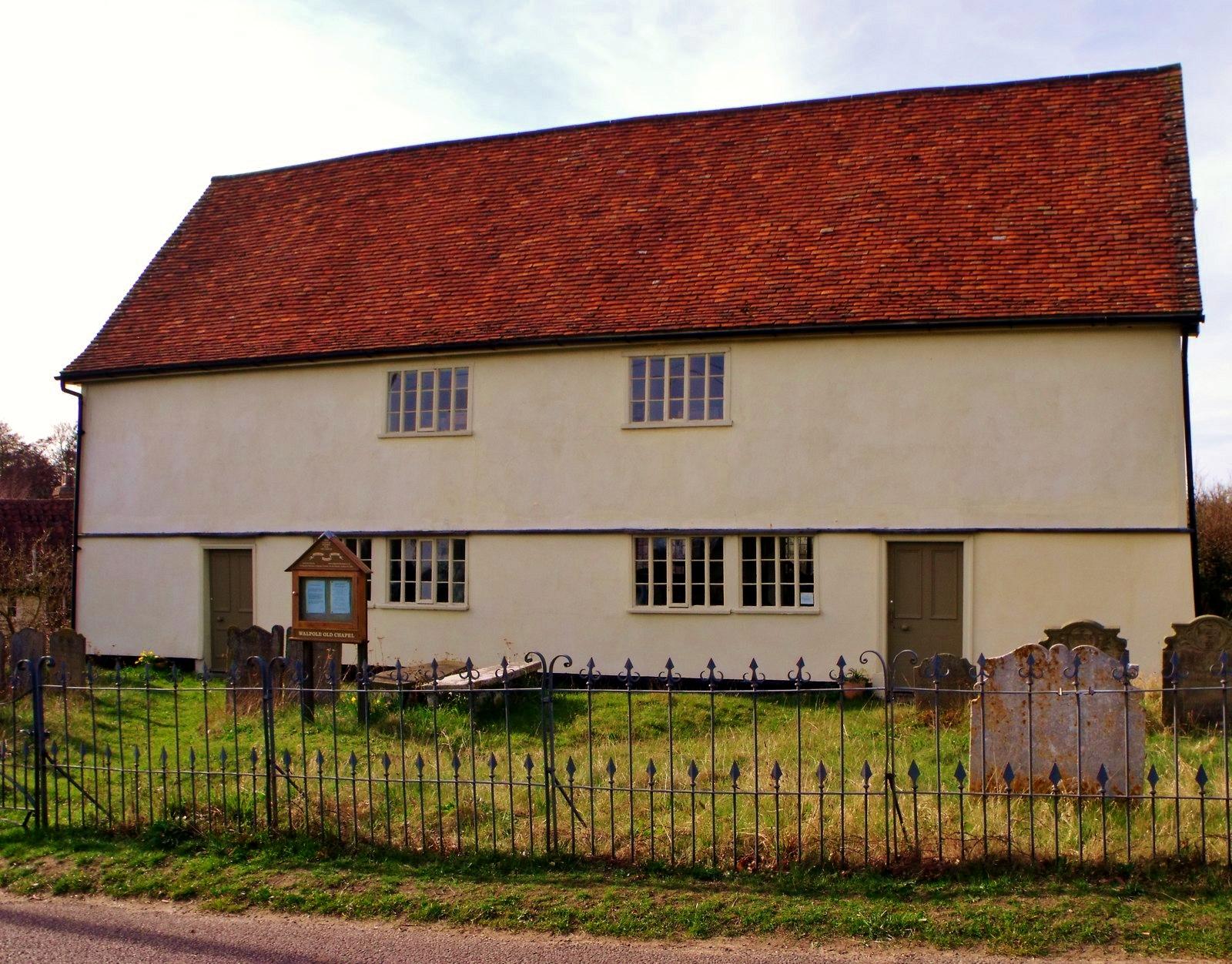St Andrew
Bramfield, Suffolk
It is clear from the first glimpse that this is a church out of the ordinary.

This grade II* listed chapel was created by local 'independents' adapting a 16th century Suffolk farmhouse to form a unique and inspiring place of worship.
Walpole, Suffolk
At first glance the building appears to be an attractive 16th century Suffolk farmhouse, in a lovely agricultural setting. But a closer look reveals its story.
A non conformist meeting house was created from this domestic farm building in the middle of the 17th century, during a time of religious repression. The congregation, which was originally formed in 1649, leased the farmhouse in 1689 and converted it shortly afterwards into an independent chapel. A simple space, created by local people to meet their own worship needs.
The chapel has one of the finest meeting house interiors in England, and vividly conveys the atmospheric setting of 17th and 18th century dissenting worship. The historic chapel is one of the most threatened types of building in England. Many have been damaged by unsympathetic conversion or the removal of fittings. This building has been part of the village of Walpole for over 400 years, and was a place of continuous worship for nearly 300 years.
The chapel formally closed in 1970, and eventually came into the care of the Historic Chapels Trust in 1995. It is cared for on a day to day basis by the Friends of Walpole Old Chapel. Today this beautiful Grade II* listed building continues to play an important role in the religious, social and cultural life of the community.

Bramfield, Suffolk
It is clear from the first glimpse that this is a church out of the ordinary.
Sibton, Suffolk
A church building full of atmosphere that clearly demonstrates its complex development and many associations through its 800 years existence.
Blythburgh, Suffolk
Blythburgh church is sometimes called the Cathedral of the Marshes, looking out as it does over the tidal River Blyth and the remnants marshes.